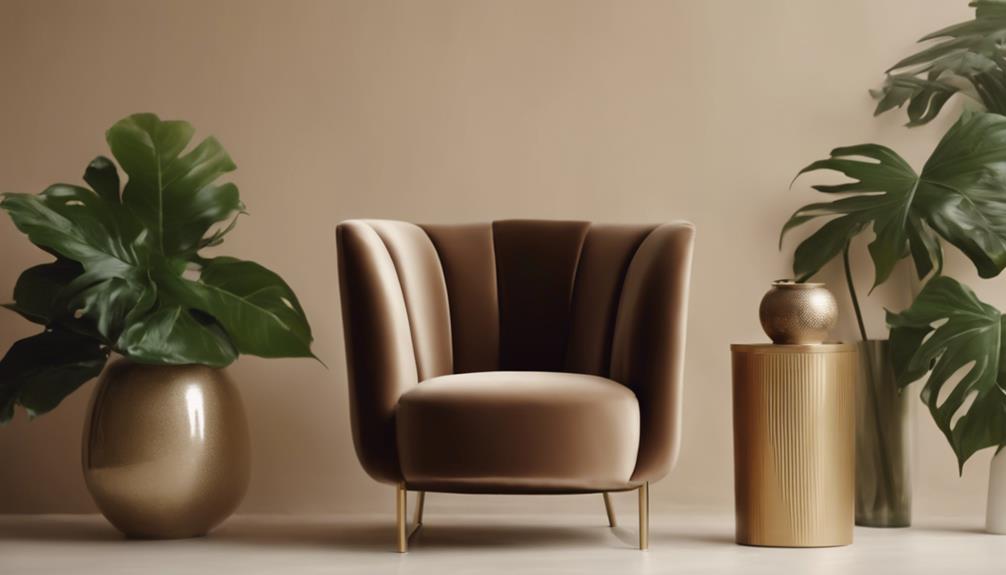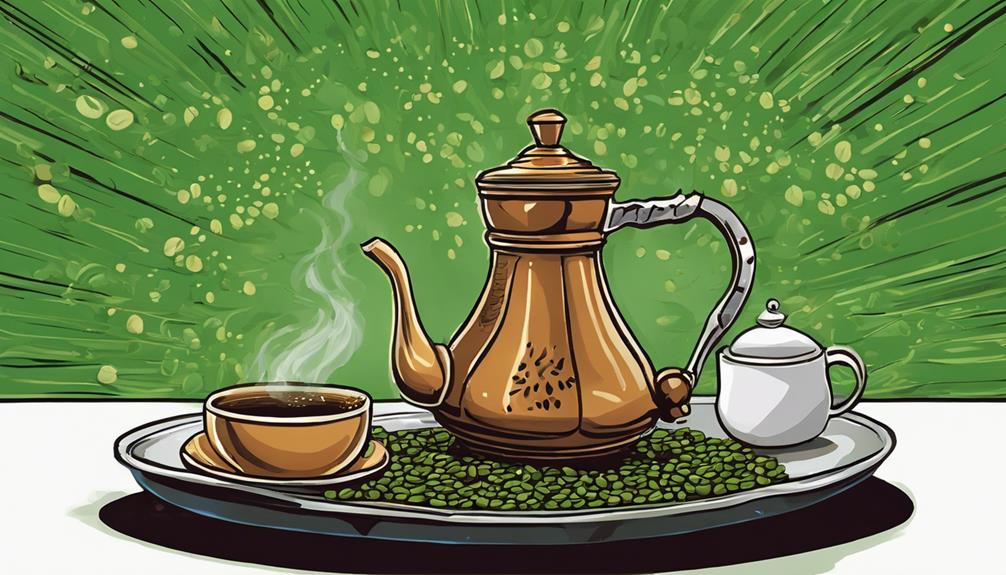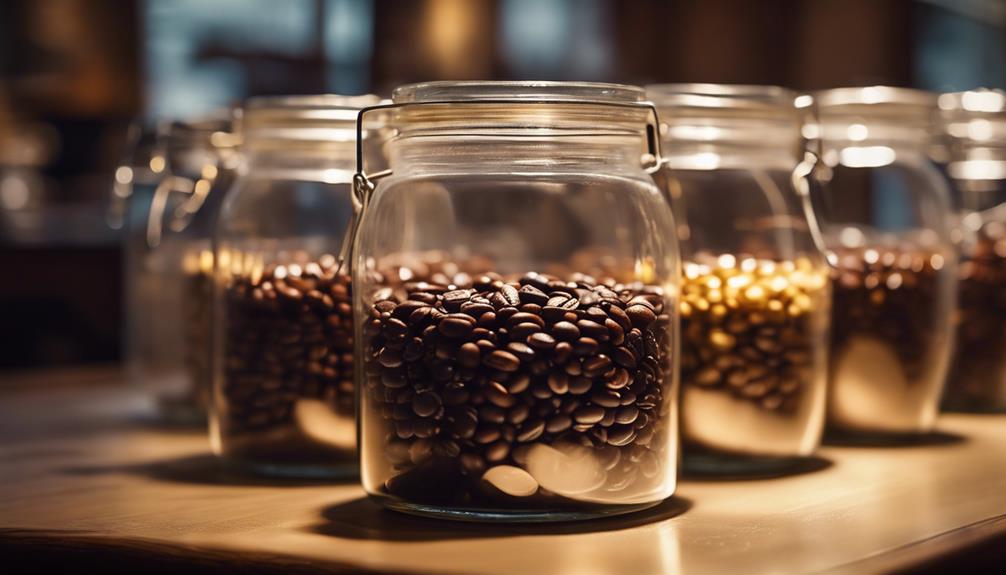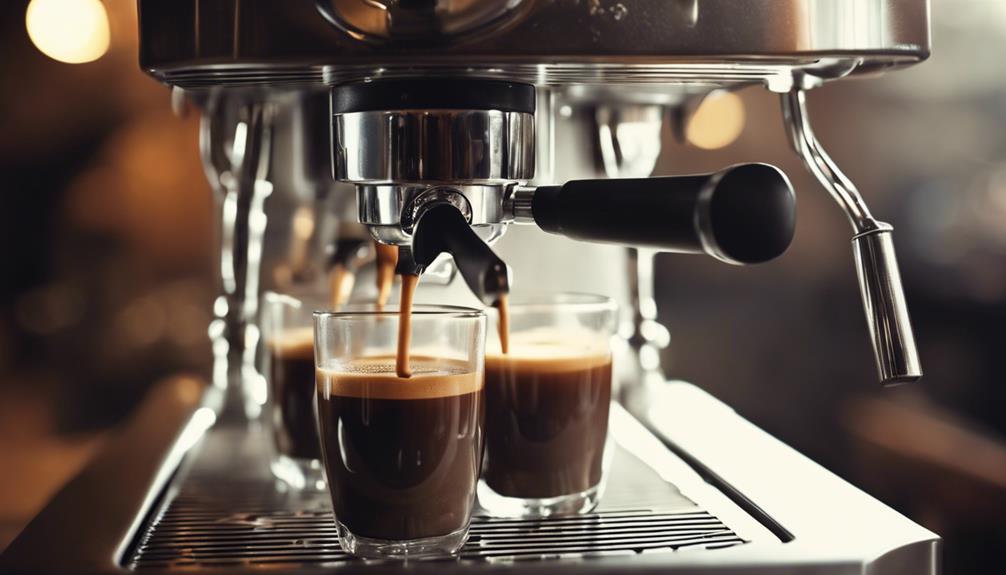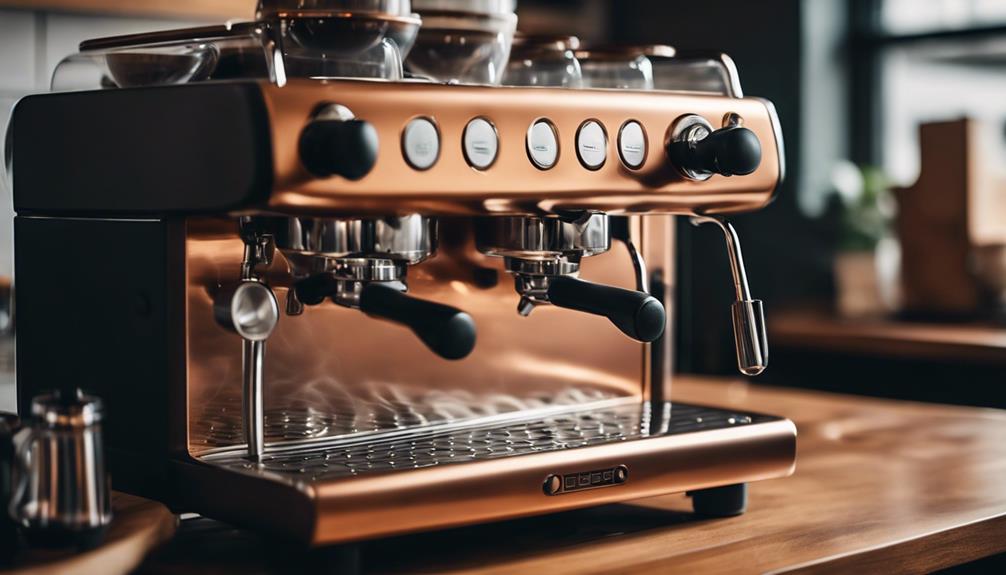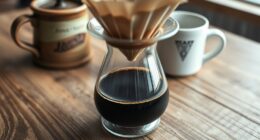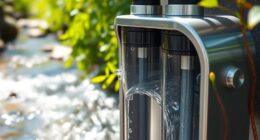You're likely drawn to the espresso color trend because of its unique ability to convey sophistication and elegance while also providing a versatile canvas for your personal style. This rich, deep shade anchors spaces and complements leather furniture, wooden accents, and metallic finishes, creating a balanced and inviting atmosphere. By pairing espresso with calming whites, soft pastels, or earthy tones, you can achieve a harmonious color combination that enhances your overall design. Now, get ready to explore the endless possibilities of incorporating this trendy shade into your home decor, and discover the perfect blend of style and serenity. Moreover, the espresso color trend extends beyond interior design and into the world of fashion and beauty. The espresso hair color trend has gained popularity for its rich, multidimensional tones that add depth and warmth to any hairstyle. Whether you’re considering a new hair color or updating your home decor, the espresso trend offers a timeless and sophisticated option that can elevate your look and surroundings. Embrace the versatility and allure of the espresso color trend, and infuse your personal style with its luxurious and elegant appeal.
Key Takeaways
- Espresso Brown is a rich, deep shade that conveys sophistication and elegance, making it a versatile color for home decor.
- It anchors spaces, allowing for colorful decor, and complements leather furniture and wooden accents for comfort and glamour.
- Balancing Espresso Brown with calming whites, soft pastels, or earthy tones creates a harmonious and inviting atmosphere in any room.
- Combining Espresso Brown with Serene Green enhances warmth and relaxation, making it ideal for living rooms and bedrooms.
Espresso Brown: The New Neutral
As you explore the world of home decor, you'll discover that Espresso Brown has emerged as a new neutral, offering a rich, deep shade that effortlessly conveys sophistication and elegance.
This versatile color serves as a strong foundation for a room, making it an excellent choice for paint colors in your living room. As a neutral, Espresso Brown can anchor the space, allowing you to add pops of color through furniture and decor without overwhelming the senses.
Its ability to complement leather furniture and wooden accents creates a grounded and comfortable atmosphere, perfect for relaxing and entertaining. When paired with metallic finishes like brass and copper, Espresso Brown adds a touch of glamour to any interior.
Whether used as a focal point or a supporting accent, this color enhances the overall design, creating a balanced and inviting space. By incorporating Espresso Brown into your design, you'll experience the perfect blend of sophistication and coziness in your home.
Calming Effects of Serene Green
You'll find that introducing Serene Green into your home decor is an excellent way to bring a sense of calm and tranquility into your space, creating an atmosphere that feels like a serene escape from the hustle and bustle of daily life.
This soothing color invites nature indoors, promoting relaxation and well-being, making it ideal for spaces like bedrooms and bathrooms.
In interior design, Serene Green works harmoniously with natural elements like plants and fibers, enhancing the connection to nature within a room.
You can incorporate this calming shade through throw pillows, blankets, or even walls to create a peaceful ambiance.
As a flexible design color, Serene Green pairs well with both neutrals and vibrant shades, allowing for versatile applications in various design schemes.
Harmonious Color Combinations
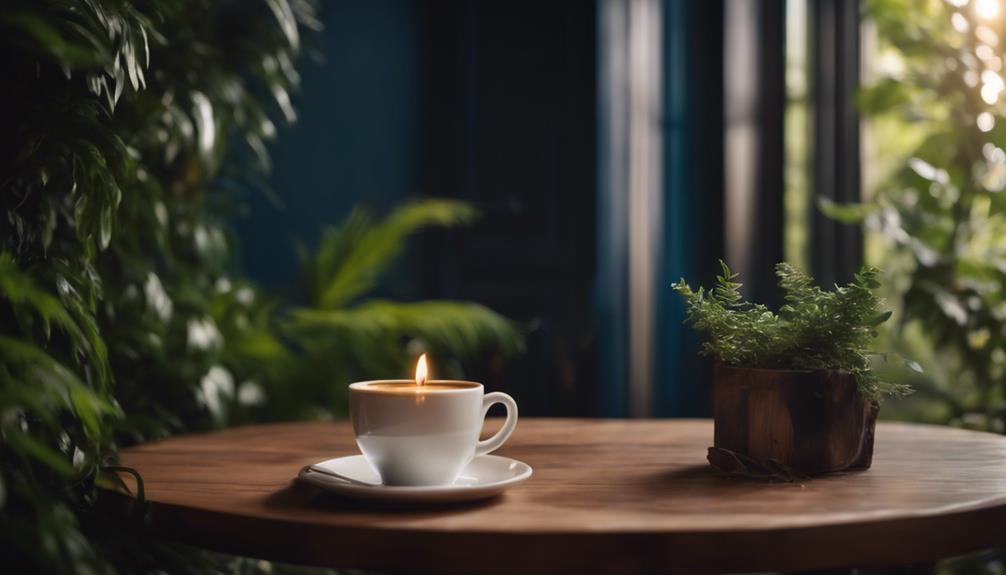
When you're looking to create a harmonious palette, you'll find that Espresso Brown is a versatile hue that pairs well with a range of colors.
You can balance it with calming whites, soft pastels, or earthy tones to create a soothing atmosphere.
Rich Brown Accents
By incorporating rich brown accents into your home decor, you can create a visually appealing space that exudes warmth and sophistication. To achieve this, you can pair espresso brown with crisp whites or warm off-whites, which will enhance its rich vibrancy and create a striking contrast in decor.
If you want to add a natural touch, harmonize espresso brown with earth tones like sage green, amber, or rust, which will provide a grounded aesthetic that complements natural elements.
For a modern twist, try pairing espresso brown with bold colors like electric turquoise or hot pink, which will add a striking contrast to traditional designs. Alternatively, you can soften the intensity of espresso brown with soft pink or powder blue, maintaining elegance while adding a delicate touch.
Balanced Green Contrast
Pairing espresso brown with shades of green creates a visually striking contrast that balances warmth and calmness in any room, allowing you to craft a harmonious and inviting atmosphere.
The rich, dark tones of espresso brown serve as a strong foundation, while the light, soothing qualities of green add a rejuvenating touch. This pairing is versatile, making it suitable for various spaces such as living rooms, where espresso brown furniture can be accented with green decor, or bedrooms, where green linens can soften the look of brown furniture.
Incorporating natural elements, such as plants and fabrics in green, alongside espresso brown, enhances the connection to nature and promotes a tranquil atmosphere.
You can also accessorize with complementary colors, such as creamy whites or soft blues, alongside espresso and green, to further enrich the overall design and create a cohesive aesthetic.
Designing With Espresso and Green
You can create a stylish and calming atmosphere in your home by combining the richness of Espresso Brown with the freshness of Serene Green. This visually appealing contrast balances sophistication with a calming atmosphere, making it suitable for any room in the home.
In your living spaces, try pairing Espresso Brown leather sofas with Serene Green accents, such as cushions or wall art, to enhance the warmth and comfort of the room. For a tranquil bedroom, use Espresso Brown furniture with Serene Green linens to foster relaxation.
Adding the Marise Earth Fabric with its boucle texture will enrich the overall design and make your spaces feel more inviting. You can also layer Espresso Brown as a base color with Serene Green accessories, allowing for flexibility in design and creating a cohesive, stylish atmosphere throughout your home.
Elevating Your Space With Texture
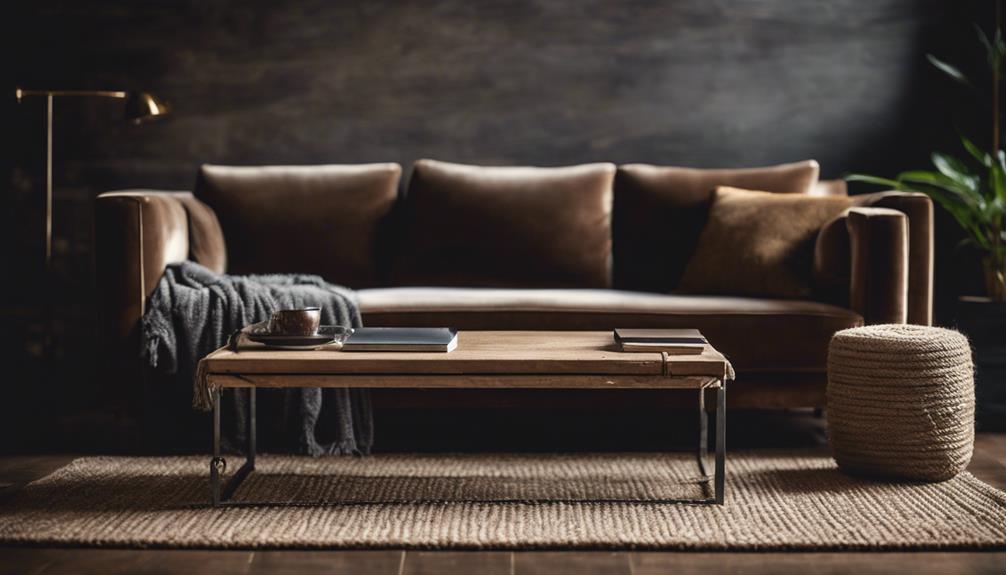
Two essential elements come together in perfect harmony when incorporating espresso color into your home decor: rich tones and varied textures.
You can add tactile appeal and depth to your decor scheme by incorporating textured elements like boucle fabrics in espresso color, such as the Marise Earth Fabric. Layering different materials, like leather, wood, and textiles, can enhance the richness of espresso tones, creating a warm and inviting atmosphere.
To take it a step further, consider using textured wall finishes, such as matte or satin, to soften the boldness of espresso and create visual interest in a room.
Rugs with varied textures in an espresso color can ground a space while adding comfort and warmth underfoot. You can also create dynamic contrast by combining smooth surfaces with textured accents, such as glossy accessories against a matte espresso wall.
Room-by-Room Color Inspiration
As you explore the world of Espresso Brown in your home decor, you'll want to contemplate how this rich color can be used to create unique atmospheres in each room.
From the living room to the bedroom, kitchen, and beyond, you'll discover how to harness the power of Espresso Brown to craft spaces that reflect your personal style.
Let's take a closer look at how to incorporate this stunning shade into your design, starting with the living room, bedroom, and kitchen.
Living Room Hues
With its rich, deep tone, Espresso Brown brings warmth and sophistication to your living room, setting the stage for a cozy and inviting atmosphere. As a base color, it provides a grounding effect that complements various styles, from modern to traditional.
To create a balanced look, pair Espresso Brown leather sofas with Serene Green accents, which will create a visually appealing focal point in your living space. You can also incorporate accessories in lighter tones, such as creamy whites or soft blues, to enhance the overall ambiance and dimension of the room.
Consider utilizing rich hues like Espresso in major decor elements, such as rugs and accent walls, to dramatically elevate the aesthetic of your living room. To maximize comfort and style, layer textures with fabrics like boucle for added tactile appeal.
Bedroom Retreat Ideas
You can create a serene retreat in your bedroom by incorporating espresso brown hues, which will envelop you in warmth and sophistication, perfect for unwinding after a long day.
Start by incorporating espresso brown furniture, such as a bed frame or nightstands, to create a warm and inviting atmosphere. Pair these pieces with serene green linens or accent pillows to promote a sense of tranquility and relaxation. To enhance the cozy appeal, layer textures like boucle fabrics or plush throws in complementary shades.
If you want to add drama to the room, paint an accent wall in a deep espresso color. This will create a focal point, allowing lighter decor elements to pop and adding depth to the space.
Balance the richness of espresso with accessories like artwork or rugs in lighter hues, such as creamy whites or soft blues, to create a cohesive design. By incorporating these elements, you'll create a bedroom retreat that's the perfect blend of warmth, sophistication, and relaxation.
Kitchen Design Tips
Incorporating espresso cabinetry into your kitchen design creates a modern, sleek look that instantly elevates the overall aesthetic of the space. You'll love the sophisticated vibe it brings to your kitchen.
When choosing an espresso color scheme, consider pairing it with lighter accents like Tiffany blue to create a vibrant and inviting atmosphere. Effective use of color contrasts is also essential. Pairing espresso with creamy whites or soft grays can enhance the visual appeal and functionality of your kitchen.
Don't forget about lighting – it plays a vital role in showcasing those rich espresso tones. Incorporate layered lighting to highlight the beauty of your cabinetry and decor.
If you have an open-concept kitchen, bold espresso color choices can establish a strong focal point while maintaining a cohesive flow between spaces.
Balancing Warmth and Coolness
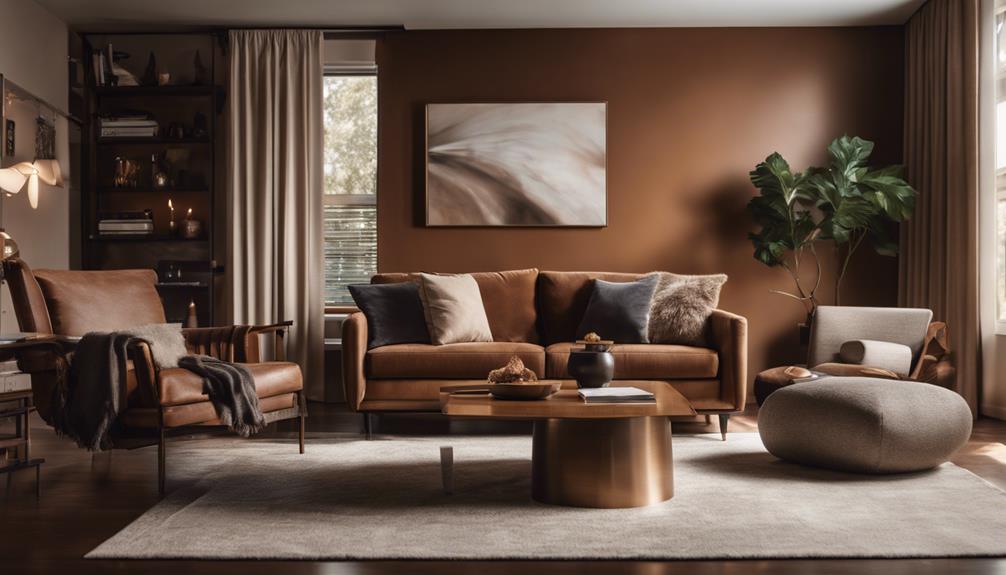
By skillfully blending Espresso Brown's warmth with Serene Green's coolness, you can craft a harmonious atmosphere that wraps your space in comfort and tranquility. This balanced combination creates a visually appealing contrast that invites relaxation in any room.
The dark richness of Espresso Brown provides a warm foundation, while the soothing lightness of Serene Green introduces a calming element, promoting a sense of balance and harmony. To take it a step further, you can layer these two colors to enhance comfort and relaxation in spaces like bedrooms and living rooms.
If you want to add more depth to your design, try incorporating creamy whites or soft blues as complementary colors to achieve a cohesive and well-rounded aesthetic. Feel free to experiment with different shades and tints of Espresso and Serene Green to find the perfect balance that resonates with your personal style and enhances the overall ambiance of your space.
Bringing Espresso to Life
To bring Espresso Brown to life in your home decor, start with a bold statement piece, like a rich leather sofa or a dramatic wooden cabinet, and let its deep, warm tones set the stage for a cozy and inviting atmosphere. This will create a strong foundation for your design, allowing you to build upon it with complementary accents and textures.
You can balance out the richness of espresso with lighter shades, such as creamy whites or soft greens, to add visual appeal and create a sense of harmony.
Incorporating espresso-colored furnishings, like a plush armchair or an ornate side table, will add depth and an inviting touch to your space.
Don't be afraid to mix and match metallic finishes, like brass or copper, to add a layer of glamour and sophistication. By doing so, you'll create a warm and welcoming environment that exudes style and personality.
With espresso as the anchor, you can experiment with different styles and textures to craft a unique space that reflects your taste and sensibility.
Frequently Asked Questions
What Color Shade Is Espresso?
You're wondering what color shade espresso is. Well, let me tell you – it's a rich, deep brown that's a perfect blend of charcoal and chocolate, creating a warm and sophisticated look that's hard to resist!
What Color Goes Well With Espresso?
When selecting shades to harmonize with your chosen hue, you'll find that soft pink, powder blue, and earthy tones like amber and sage green create a soothing symphony, while bold hues like hot pink and electric turquoise add a vibrant vibe.
What Is the Most Popular Color for Home Decor?
When choosing a popular color for your home decor, you'll find that neutral shades like beige, gray, and taupe are often favored, but lately, deeper tones like espresso are gaining traction and becoming a top choice.
What Color Accents Best With Espresso Cabinets?
"Oh, you thought your taste in home decor was unique? Think again! Anyway, to answer your question, you'll love how crisp whites, warm golds, or earthy sage greens complement espresso cabinets, adding a touch of sophistication to your kitchen."
Conclusion
As you stand in your newly designed space, surrounded by the rich, velvety tones of espresso and the soothing calm of green, you can't help but feel like you're sipping a perfectly balanced cup of coffee – warm, yet invigorating.
The harmony is palpable, and you're left wondering, what's the secret ingredient that makes this blend so irresistible?
The answer lies in the clever balance of warmth and coolness, a symphony that will leave your senses buzzing long after the coffee's gone cold.
